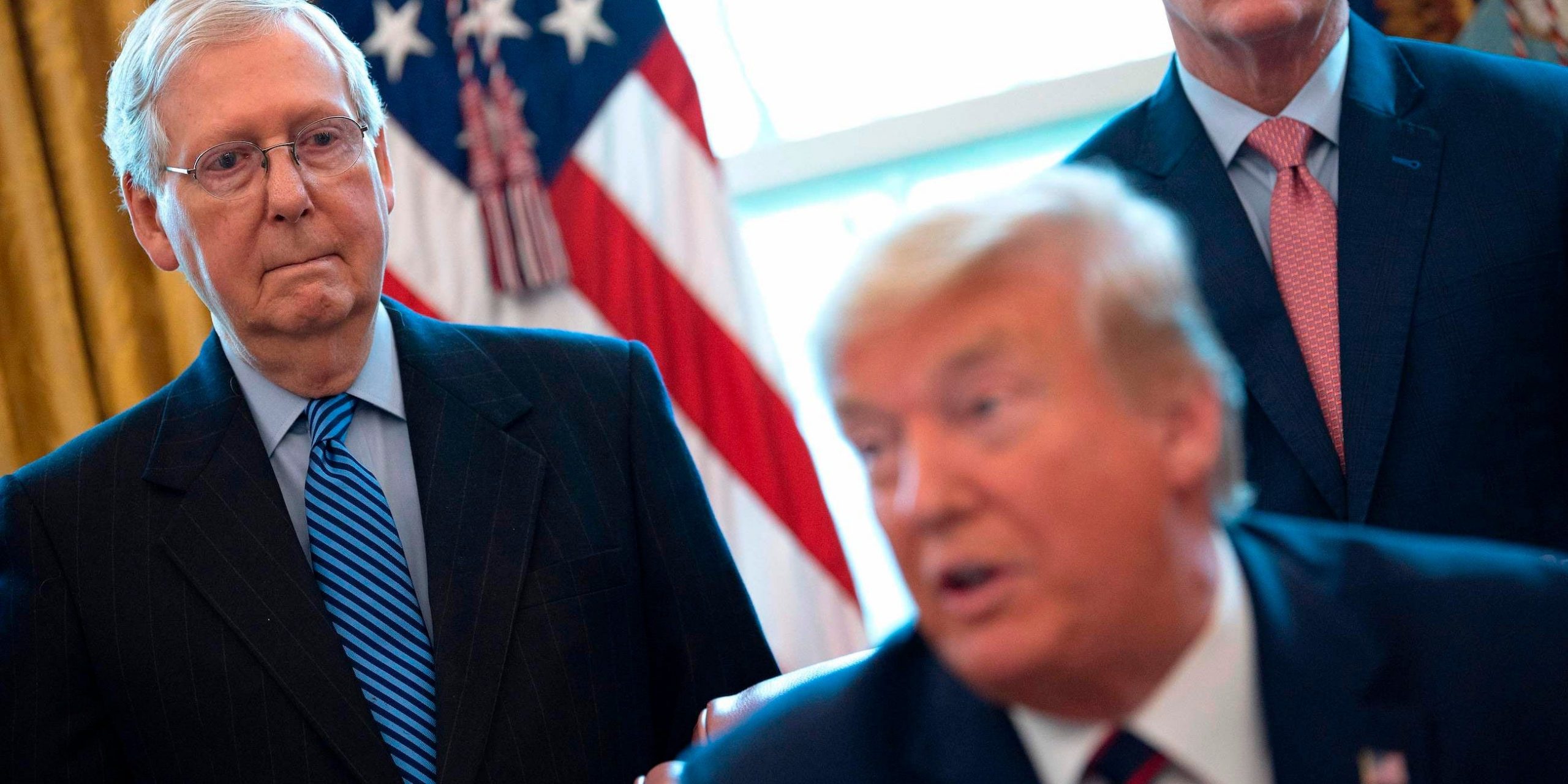
Jim Watson/AFP
- Justice Ruth Bader Ginsburg died on Friday, opening up a vacancy on the Supreme Court in an election year.
- After Justice Antonin Scalia’s death in 2016, President Barack Obama’s pick was unable to even get a floor vote in the Senate, thwarted by the Republican majority leader, Mitch McConnell.
- McConnell made clear that should another vacancy arise, he would not follow that precedent.
- Democrats have few tools at their disposal to prevent McConnell and President Donald Trump from installing another conservative on the bench.
- Visit Business Insider’s homepage for more stories.
Justice Ruth Bader Ginsburg died on Friday at age 87 following complications from cancer.
This is the second time a justice on the nation’s highest court has died in an election year. The conservative justice Antonin Scalia died in his sleep in 2016.
Plotting out how a replacement would arrive is a morbid endeavor. But because of the lifetime appointments to the bench and the debacle of President Barack Obama trying to appoint a justice after Scalia’s death, the stakes are high enough that both sides of the aisle have put a lot of thought into various outcomes.
Before her death, Ginsburg was the oldest justice on the bench. Justice Stephen Breyer is 81, Clarence Thomas is 72, and Samuel Alito is 70.
And Chief Justice John Roberts, 65, was hospitalized overnight with a head injury over the summer after a fall.
Should a justice die or become unable to fulfill their duties on the bench, it's almost certain, based on past statements from the White House and Senate leadership, that President Donald Trump would quickly pick a replacement and the Republican-controlled Senate would move to confirm them.
The tense standoff from the last vacancy during an election year casts a shadow over the process.
In 2016, Scalia's death left an opening on the bench that Senate Majority Leader Mitch McConnell kept vacant until after the election. Merrick Garland, Obama's moderate pick to replace Scalia, was left stranded.
But McConnell has indicated that should a similar scenario arise in 2020, he would not hold off until the election.
A spokesman for McConnell directed Insider to the majority leader's previous comments on what he would do about a vacancy in an election year, such as his comment to Fox News earlier this year that "if you're asking me a hypothetical ... we would fill it."
McConnell justified the incongruity by arguing that "you'd have to go back to the 1880s to find the last time a vacancy on the Supreme Court occurring during a presidential election year was confirmed by a Senate of a different party than the president."
He added. "That was the situation in 2016. That would not be the situation in 2020."
There are long-standing procedures for a scenario like this, laid out in the Judiciary Act of 1869:
- Once there's a vacancy, the president can nominate someone to the bench.
- If the Senate is in recess, the president's pick can cruise right through to take their oath and join the court — but only temporarily, until a confirmation vote by the end of the next Congress.
- This route is less likely because:
- Democrats could try to call for a "pro forma" session, meaning Congress isn't really in recess.
- Recess appointments still have to be confirmed by the end of the next Congress, so Trump and McConnell would prefer to have the votes for a regular, permanent replacement while there's still definitely a GOP majority.
- This route is less likely because:
- If the Senate is in session, senators will hold an executive session and hearings on the nominee, which can take two to three months with minimal delays. This process includes background checks, individual meetings between the nominee and senators, and then questioning in hearings before the final confirmation vote.
- Once the Senate confirms the nominee, the nominee is installed as a Supreme Court justice for life.
Given the outrage from Democrats over McConnell's blocking of Garland in 2016, the dynamics now are a little more complicated.
With Democrats in the minority and Senate rules no longer offering filibuster protection for the minority party for Supreme Court nominations, they would have few options to impede McConnell.
McConnell would have two to three months to orchestrate a Supreme Court confirmation (which could still be possible after the election during a so-called lame-duck session) before a new Congress — and potentially a new president — comes to power in January.
There would first be that 30- to 45-day background-check process. About a week later, lawmakers would meet for an executive session, which has its own procedural rules.
Jim Manley, who was Democratic Senate Majority Leader Harry Reid's senior communications adviser, told Insider that Democrats could try all sorts of tricks via motions and other procedural measures to gum up that phase of the process.
But the Republican majority gives McConnell the power to essentially rewrite the Senate's rules as long as he has the votes, giving him a trump card over Democrats' efforts.
"McConnell is singularly responsible for breaking the Senate," Manley said, adding that there was "zero question" in his mind that McConnell would deploy whatever maneuvers necessary to get a conservative on the bench.
McConnell has been unequivocal in his desire to get a justice confirmed as soon as possible while Trump is in office, so if something were to happen to a justice, the process would likely move tensely but swiftly.
